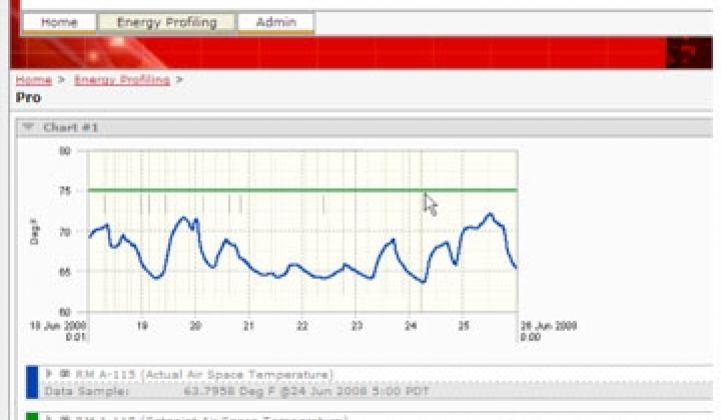EnerNoc (NSDQ: ENOC) says it has come up with a first in the demand response business –treating every piece of equipment like a modern American teenager.
That way, they can keep their parent – EnerNoc, in this case – up to date on their minute-to-minute activities, no matter how boring or histrionic. In any case, it's easier than trying to round them up for a family conversation.
That's the idea behind EnerNoc's PowerTalk, software that brings "presence" to the air conditioners, motors, light banks and other devices that it pledges to turn down on demand to help utilities get through peak loads.
Until now, that meant building a virtual private network at each customer's site, EnerNoc President David Brewster said. It also meant that every device must be asked how it's doing, so to speak -- it doesn't let you know unless you ask.
PowerTalk fixes that by hooking up every device with the equivalent of an instant message service, using Extensible Messaging and Presence Protocol (XMPP), an open instant messaging standard.
"We now have what are the industry's first presence-enabled smart grid devices," Brewster said. In fact, PowerTalk is already being used by about 200 of the company's 5,000 or so customers, the company said Thursday.
EnerNoc and competitors such as Comverge (NSDQ:COMV), CPower, EnergyConnectand Constellation NewEnergy aggregate customers who agree to cut their power when utilities demand it, usually with a day's notice or so.
But those that can provide power on minutes' notice can command higher prices, if they can promise technology fast and reliable enough to make the new deadlines.
With PowerTalk delivering much richer and more frequent data, "it's no longer going to be a separate computer in the utility control room reporting data every five minuets," Brewster said.
Instead, "Now it's going to be feeding into their operations center at the same frequency as their central generation," he said – an important consideration for an industry that wants to be taken as seriously as the peaker coal- and gas-fired power plants they aim to replace.
Keeping devices in constant contact with control centers also could provide richer data and faster responsiveness to services like energy efficiency optimization, which EnerNoc now offers customers (see EnerNoc Expanding Into Carbon Management, Energy Services).
Brewster said he'd like to see PowerTalk eventually adopted for broader smart grid functions, like outage detection and voltage and frequency regulation.
EnerNoc has about 2.2 gigawatts of power under management, putting it in the top tier of demand response providers. If PowerTalk delivers on lower installation costs and added efficiency, it could help it compete in that field, said Ben Schuman, analyst with Pacific Crest Securities.
But the real breakthrough would be "software licenses, or pay-for-performance efficiency contracts, versus than just selling megawatts into a demand response program," he said. While demand response as it is organized today is limited to utility or grid operator contracts, saving energy is valuable to everyone.
Other demand response companies are looking at new markets. In Jaunary, Comverge released software to help utilities manage its demand-response network as well as data from smart meters (see Green Light post).
Constellation NewEnergy is piloting a program based on using demand response to hedge its own power purchase contracts against moment-to-moment demand and sharing the savings with participating customers.
CPower raised $10.7 million earlier this week (see Green Light post), underscoring the fact that demand response can deliver power savings at a fraction of the cost of adding new generation, renewable or otherwise (see EnerNoc Harvests Power in Maryland).



